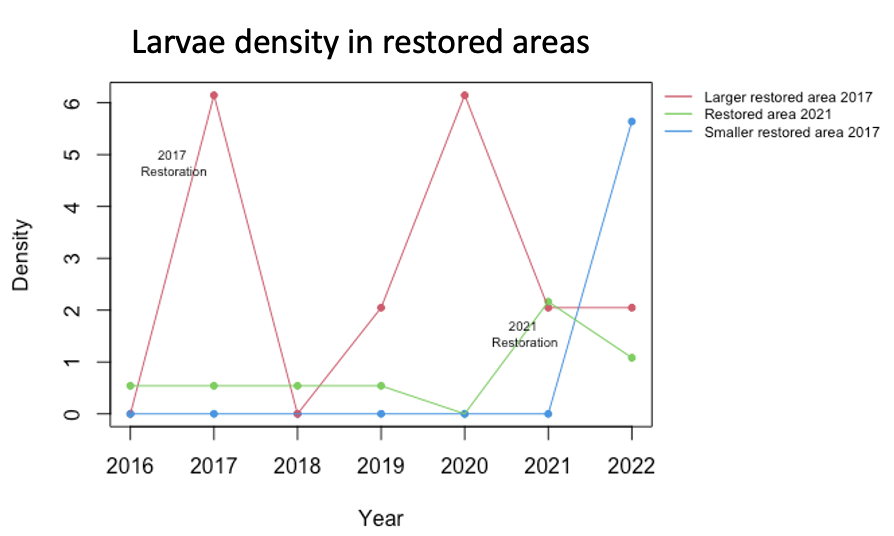Large Scale GLM: The number of imagos (max. count) in a grid cell increased with increasing ground moisture (GMI), connectivity, bush cover, and open land, and was lower in grid cells that were grazed. All environmental parameters tested in the final model were significant with a p-value below 0.05. The most important explanatory variable was connectivity according to the ΔAIC.
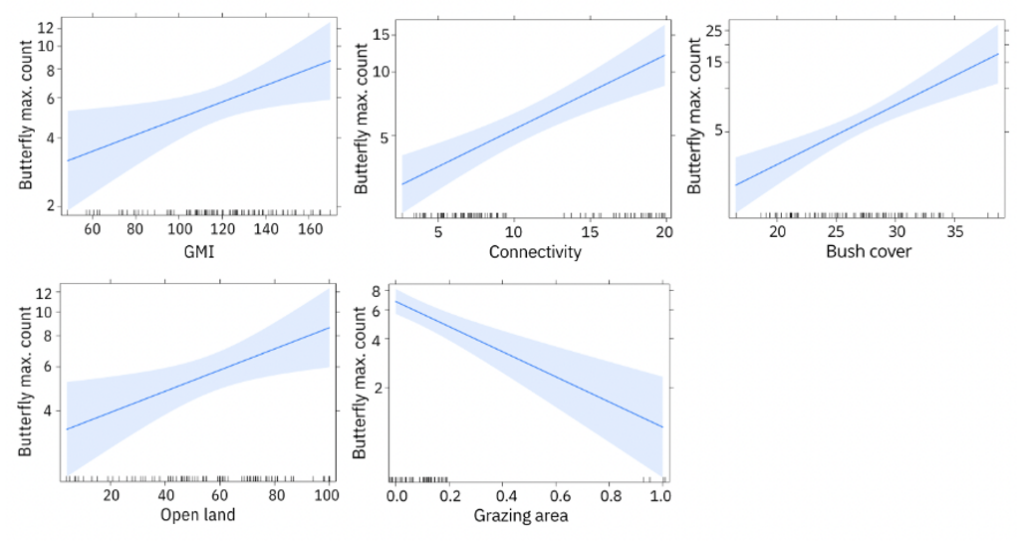
Small Scale GLM: The larvae occurrence probability in a grid cell significantly increased with increasing host plant abundance, host plant stems, and the presence of tussocks, while it decreased with increasing vegetation height. The most important explanatory variable was host plant abundance according to the ΔAIC.
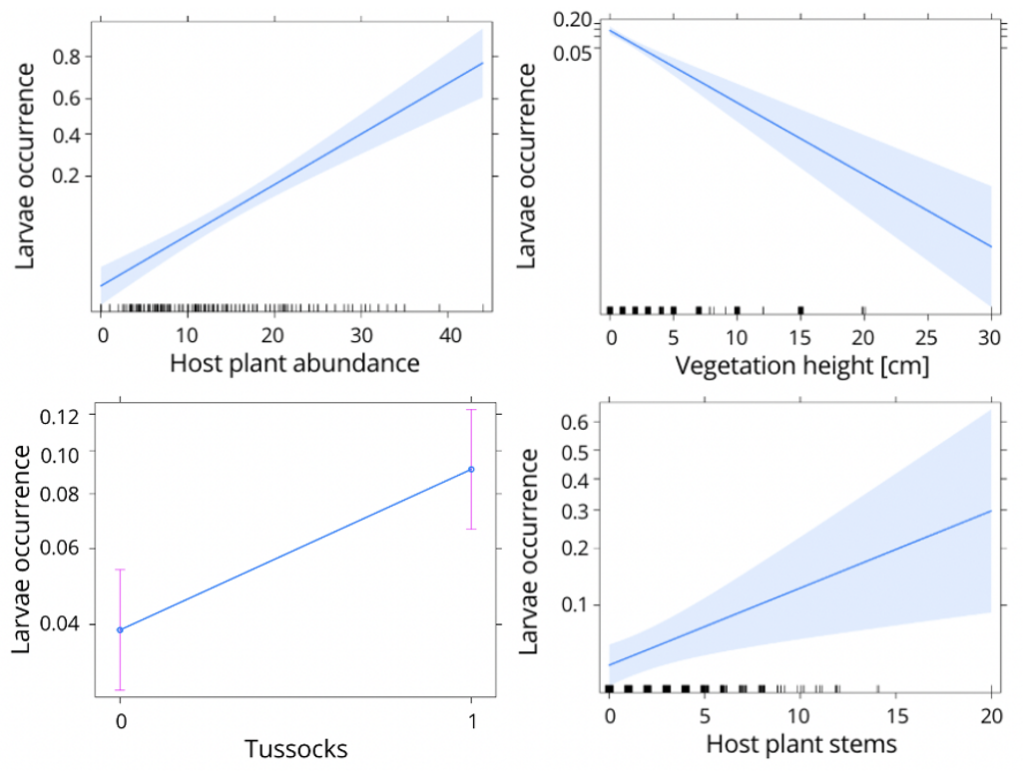
Vegetation parameters across different years: The inability of the vegetation in Filehajdar to recover since the 2018 drought is highlighted by the change in host plant count and maximum leaf length over time. Both were clearly higher before the 2018 drought and only showed a slight improvement in the following years, but never reaching pre-drought levels.
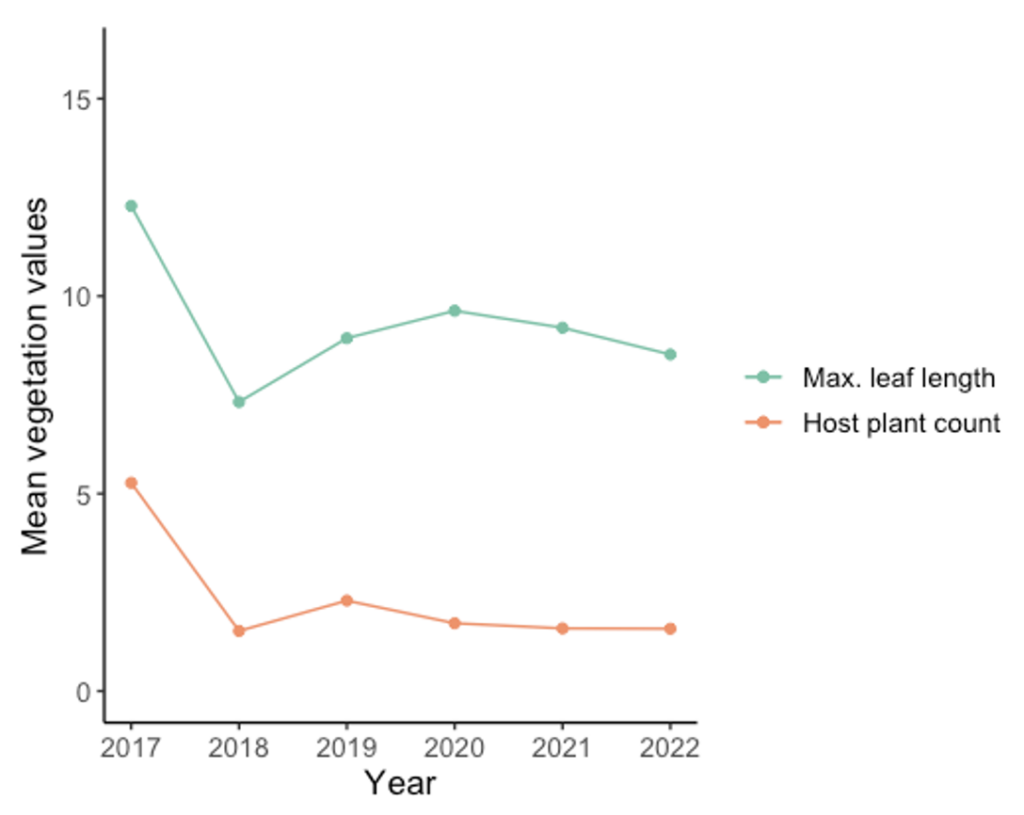
Butterfly population across different years: The butterfly density estimation in the three restored areas showed that the area restored in 2021 and the larger restored area from 2017 follow a similar pattern over time as the overall population at Filehajdar. In contrast, the smaller restored area from 2017 exhibits a more fluctuating pattern. All three restored areas are showing an increase in butterfly populations while the general population in Filehajdar is declining.
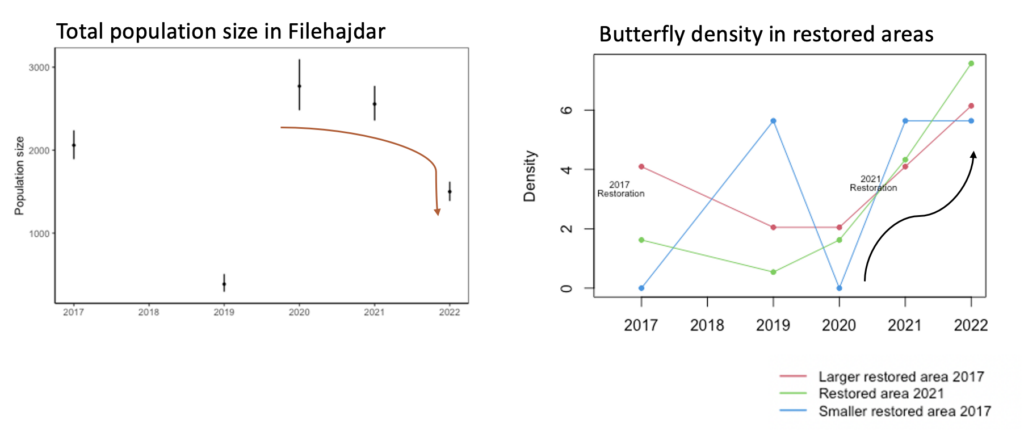
Larval population across different years: The larger restored area from 2017 was used as a breeding site immediately after its restoration in 2017 but has since then been subject to a fluctuating cycle. In contrast, the smaller restored area from 2017, was only used as a breeding ground in 2022. However, in 2021, two larvae colonies were discovered for the first time in a habitat patch located just north of this restored area and one colony in the adjacent area that was impacted by the restoration by increasing light levels in the area. By 2022, the number of larvae colonies in the northern patch had increased to four.
